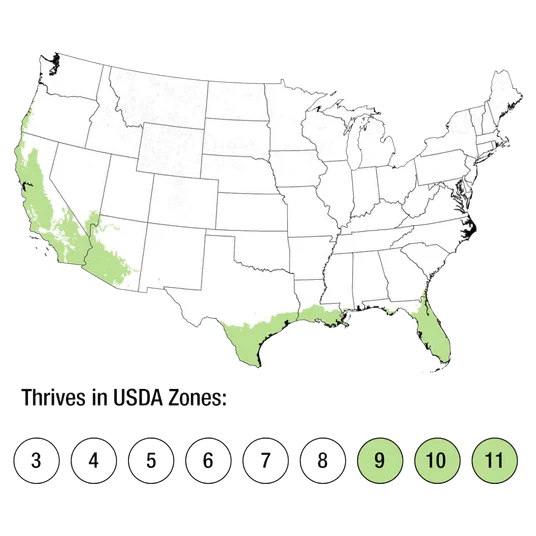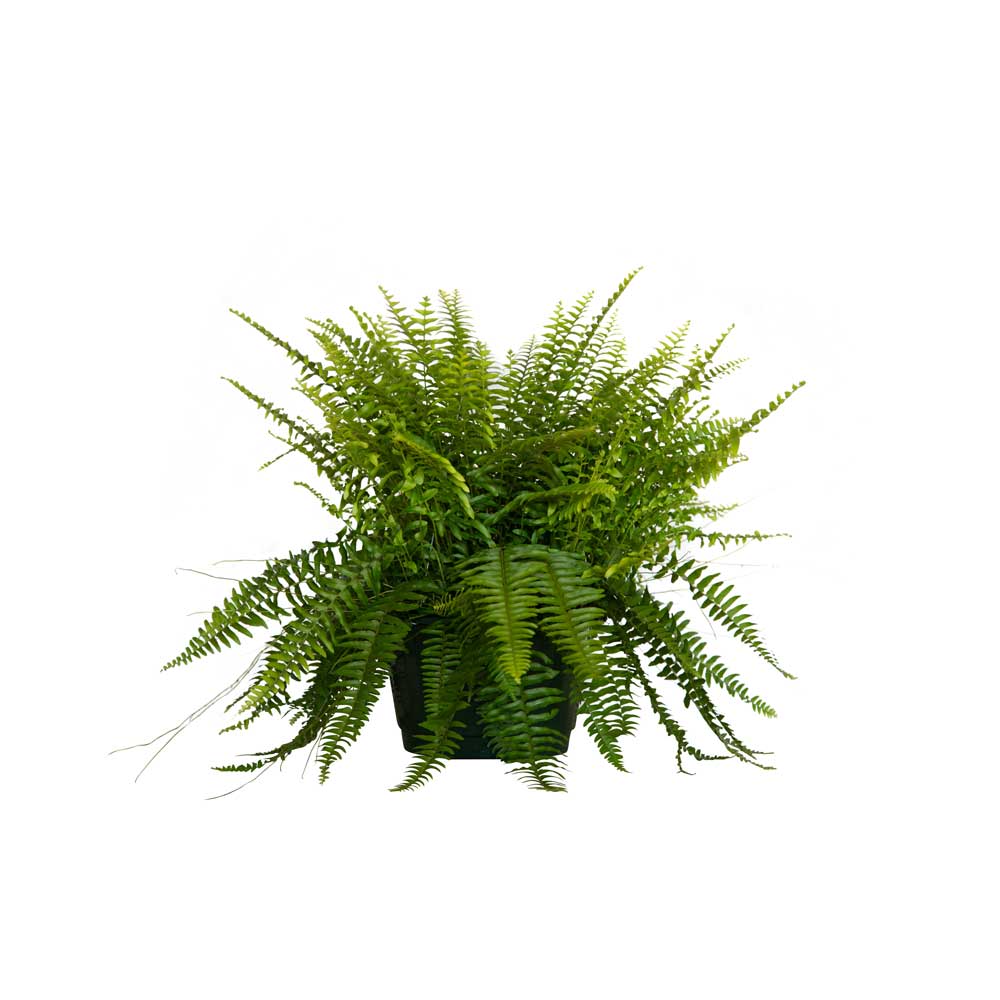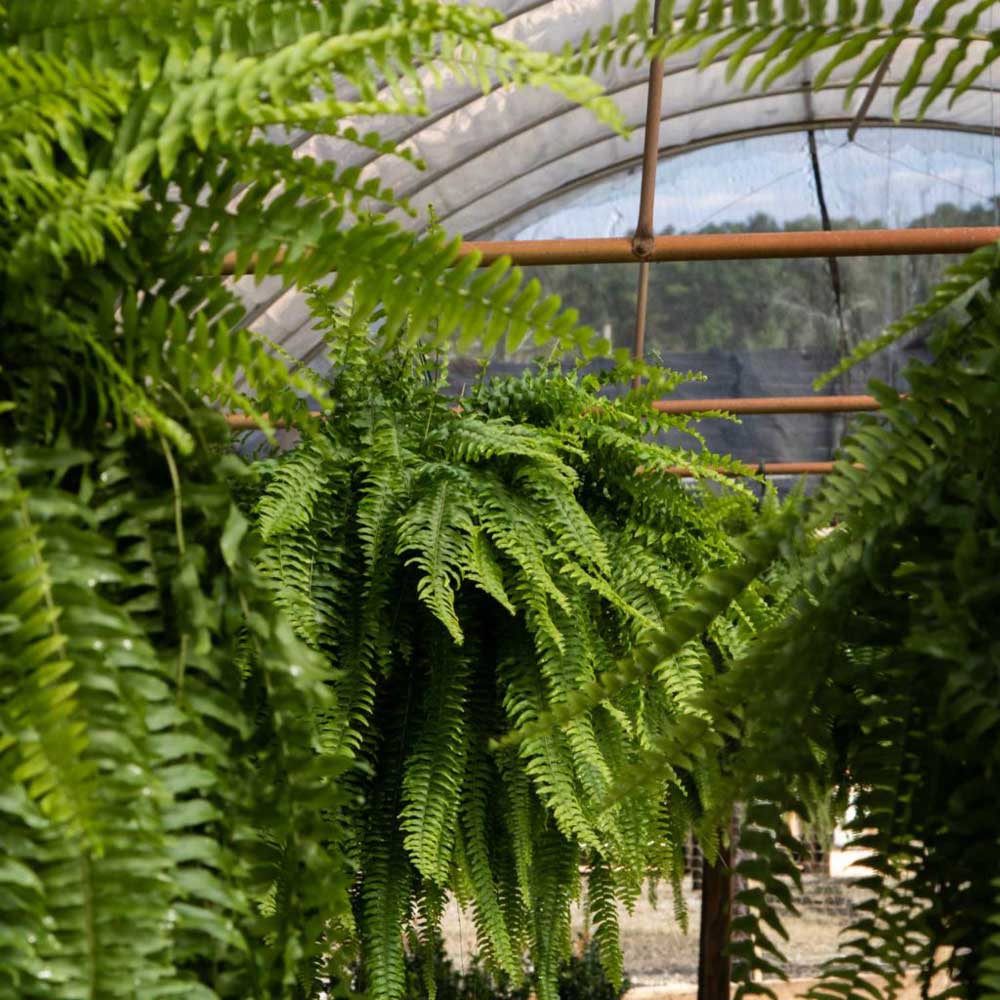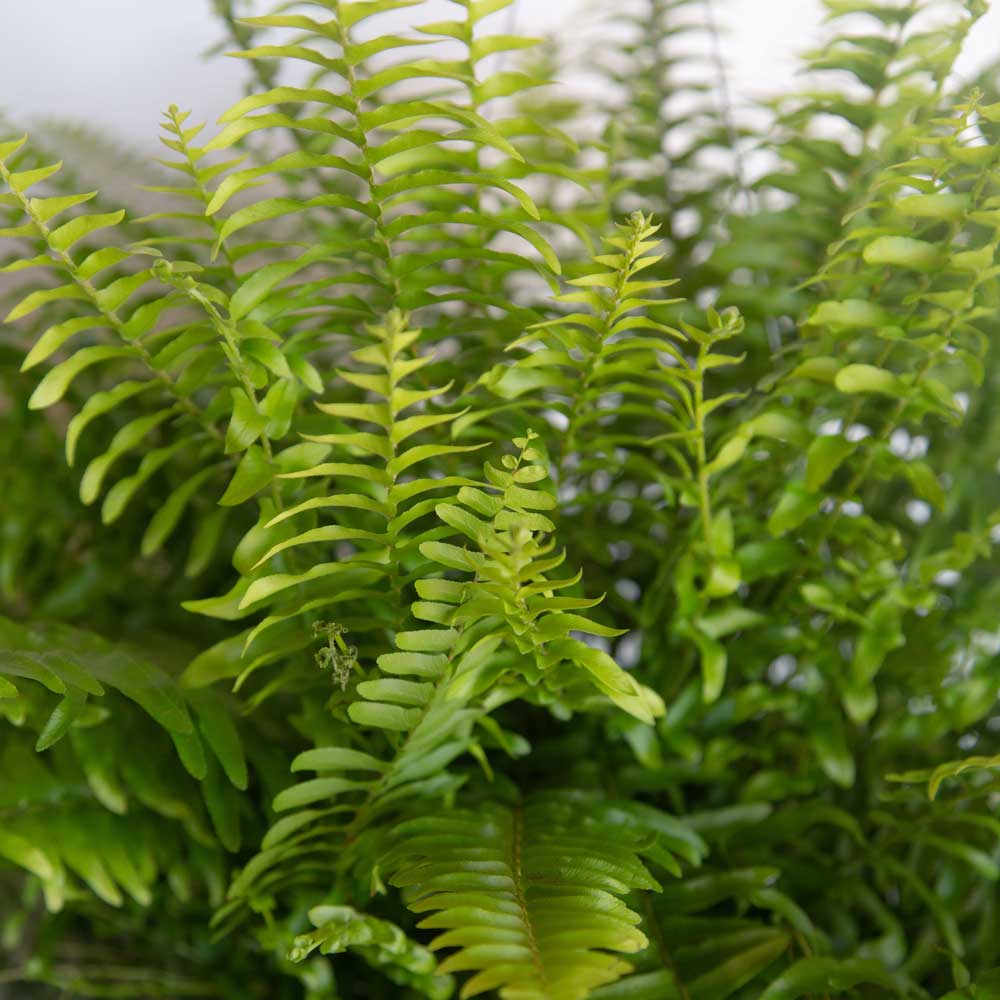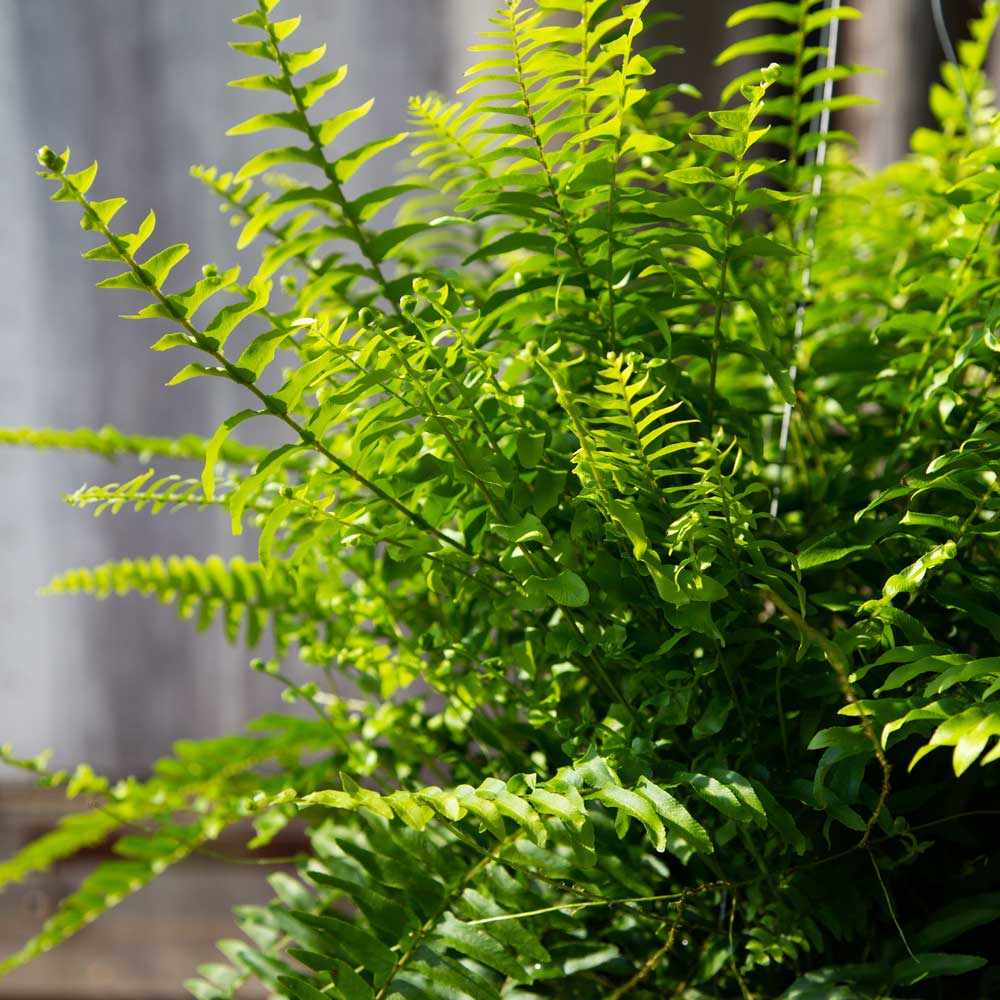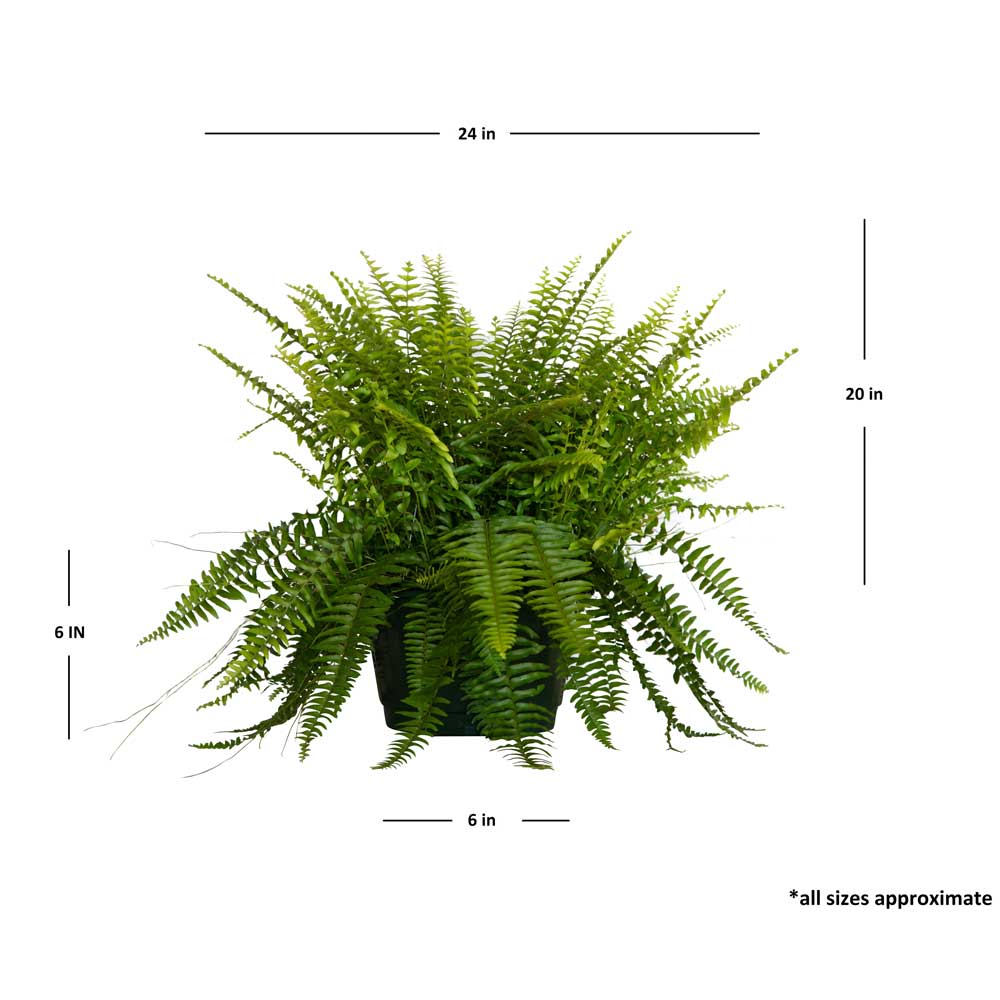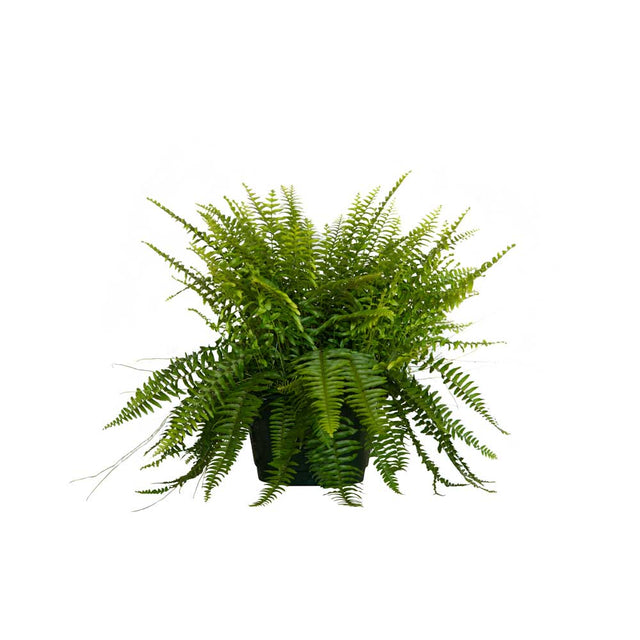Boston Fern Hanging Basket in 10" Pot
Boston Fern Hanging Basket in 10" Pot - 10 Inch Basket is backordered and will ship as soon as it is back in stock.
Couldn't load pickup availability
Description
Description
The Boston fern is a popular fern species that is synonymous with tropical regions around the world and is the newest addition to the Plants by Mail catalog for the 2022 season! It is a classic houseplant often hanging out in living room corners or hanging from the rafters of porches and balconies. Its blue-green sword-shaped foliage is composed of small leaflets that grow vertically and only begin to arch once the fronds have become much larger. Like many other ferns, the Boston fern is a slow grower, and it thrives when planted outdoors in the fall, spring, or at any point in the year if planted indoors.
Although you may place your fern in another container or plant it in the ground, our Boston Ferns ship in a 10-inch hanging basket that you can use right out of the box.
Mature plants are 3-4 feet wide in both height and width under optimal conditions. Nephrolepis exaltata is a larger variety of fern compared to others. They may require little care, but they will outgrow the containers they've shipped in - usually ever 2 to 3 years.
Boston Fern Care
Boston ferns are tropical plants in nature and prefer humid growing environments and forested areas when placed outdoors.
Optimal USDA Zones and Sunlight Requirements
The Boston Fern thrives in USDA ZONES 9-11, but can be planted indoors anywhere. See our tips on indoor care below.
Sunlight requirements for these fern plants vary depending on the time of year and the location they are planted. Ideally, you'll want to select a location where the plant gets 2-3 hours of indirect light.
Whether indoors or outdoors, you should avoid direct sunlight, which can scorch these plants. You'll also want to avoid total shade. Find a balance of light that works for the plant. Watch for the telltale sign of yellowing leaves to know that your fern is unhappy.
The Boston fern light requirements vary depending on the time of year. The plant benefits from bright, indirect light during fall and winter. A location where the plant gets at least two hours of indirect sunlight per day, preferably in the morning or late afternoon, is ideal.
Yellowing Leaves
If the leaves of your fern are struggling to retain their green color and are beginning to look dry and yellow, chances are the location's humidity is not high enough or the soil is not maintaining the right amount of moisture. Check your soil's moisture. If the soil is damp, try misting the plants 1 to 2 times weekly to increase the humidity.
If the leaves are yellow but not dry, the light conditions of the fern may not be right.
Watering Your Ferns
Making sure that the soil remains damp is the key to a healthy fern that can enjoy years of life. Check the soil on daily basis to be sure that no dryness is present. If so, water generously and allow the water to drain thoroughly. Often these ferns are planted in mixtures of soil high in peat moss. Soaking the Fern routinely to hydrate the moss fully is a great idea.
How do you take care of a Boston fern indoors?
When caring for your Boston Fern indoors, it is a good idea to provide additional humidity for them, especially in the cooler months when heaters tend to run. Heaters create a dry environment. Lightly misting your fern 1-2 times per week should also provide it with its needs.
Care & Use
Care & Use
Spacing Recommendations
Spacing Recommendations
-
Scientific Name
-
Hardiness Zone9, 10, 11
-
Sun ExposureFull Sun to Part Shade
-
Evergreen or DeciduousEvergreen
-
FeaturesWeeping Habit, Attracts Birds / Butterflies
-
Feature ColorGreen
-
UsesHouseplant, Accent, Container, Woodland Garden
-
Water NeedsMedium
-
Bloom SeasonNone
Growing Zones : 9, 10, and 11
